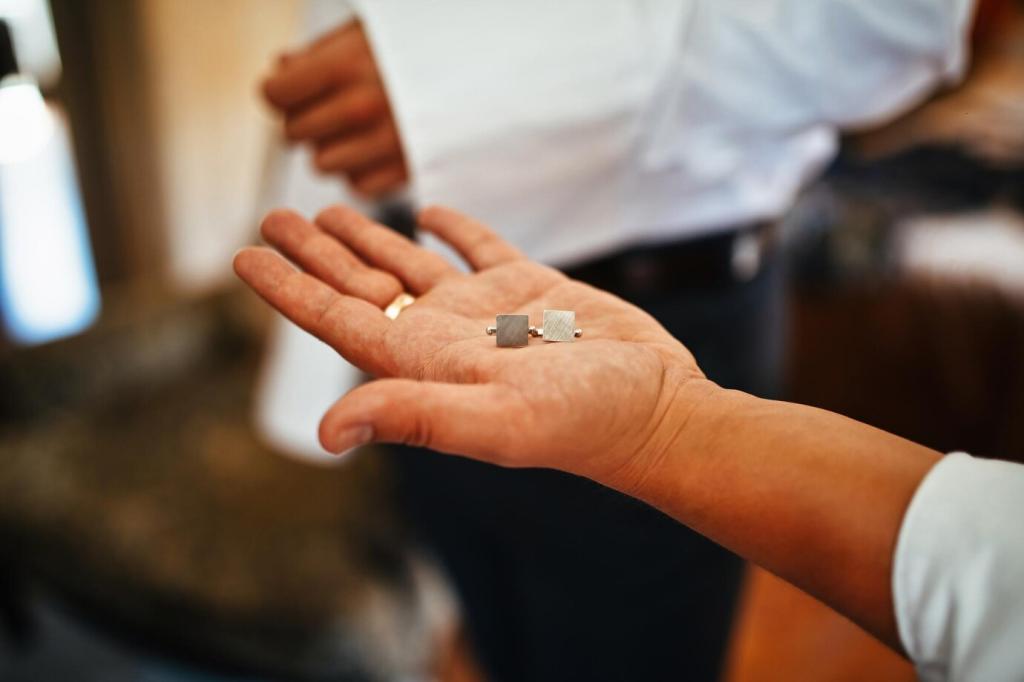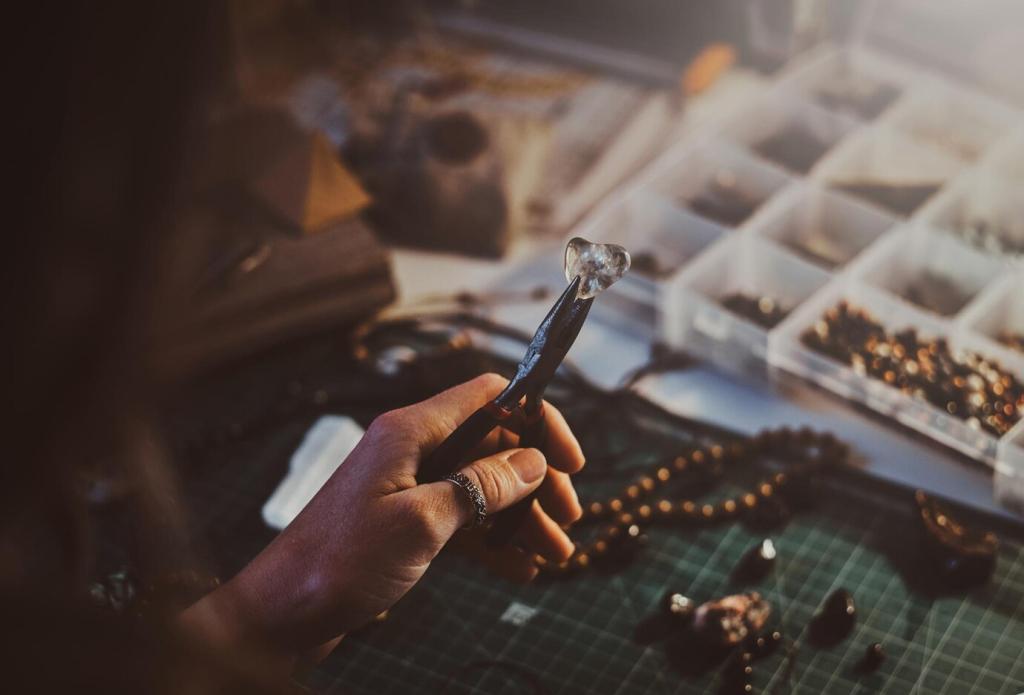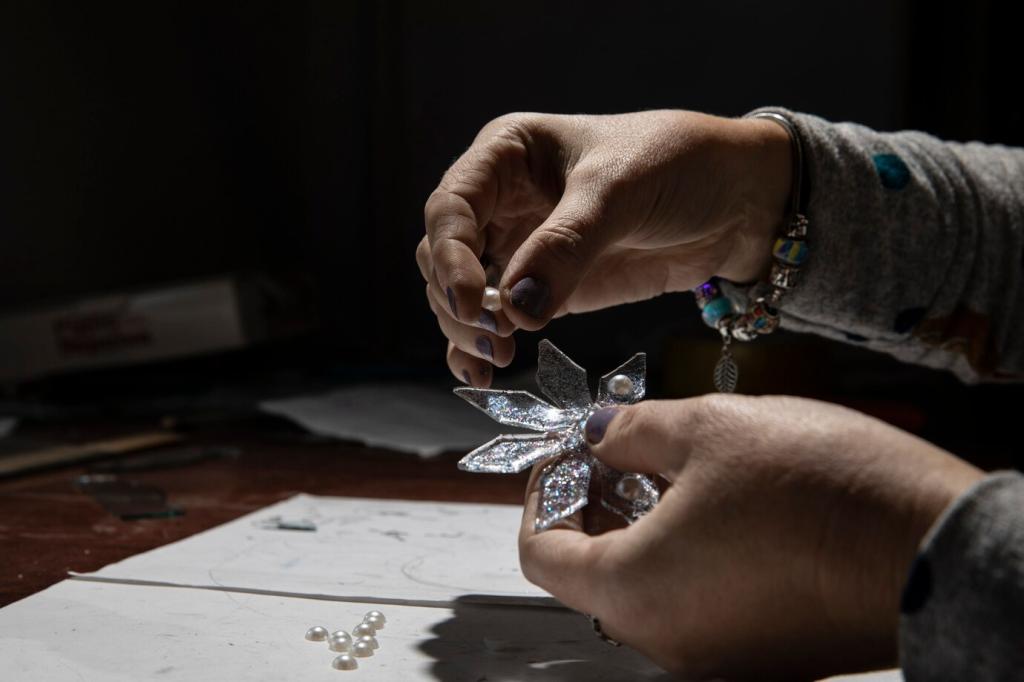
Different Styles of Gold Necklaces Explained
Today’s chosen theme: Different Styles of Gold Necklaces Explained. Explore timeless chains, modern silhouettes, and thoughtful details so you can choose pieces that feel personal, layer beautifully, and last. Share your favorite style in the comments and subscribe for upcoming jewelry deep dives.


Paperclip Links
Bold, elongated links create negative space that reads modern and airy. Paperclip chains layer effortlessly with delicate pieces and make pendants feel current. Vote in the comments: chunky solo statement or mixed with finer chains for contrast?
Herringbone Flow
Flat, tightly connected links lie like liquid gold across the collarbone, reflecting light in one smooth sheet. It is stunning but sensitive; avoid sharp bends and store flat. Share if you have ever rescued a herringbone from an overstuffed jewelry pouch.
Sleek Snake Chains
Snake chains use closely fitted plates for a seamless, tube-like silhouette that glides against the skin. They deliver minimalist polish under blazers or slip dresses. Consider shorter lengths for a clean frame and longer lengths for graceful, uninterrupted lines.
Lengths, Layering, and Necklines
Common ranges include 14–16 inches for chokers, 18 inches for classic, 20–24 for matinee, and 28–36 for opera. Test with paper strips to visualize stacked proportions before buying. Which length flatters your go-to neckline most?
Lengths, Layering, and Necklines
Start with a base chain that hugs the collarbone, add mid-length texture, then finish with a pendant or statement link. Mix link sizes for depth, vary gold finishes subtly, and leave intentional breathing room so each piece has its own spotlight.
Lengths, Layering, and Necklines
V-necks love lariats or Y-necklaces, crewnecks suit short bold links, and plunging cuts welcome long opera lengths. For knitwear, try a substantial rope or wheat; for satin, consider sleek snake. Share a photo of your favorite pairing for our community roundup.
Gold Purity, Color, and Everyday Durability
14k balances durability and richness for daily wear, 18k offers deeper color with slightly more softness, and 24k is nearly pure but too malleable for most chains. If you wear your necklace daily, 14k or 18k is a practical, lasting choice.
Gold Purity, Color, and Everyday Durability
Yellow gold is classic and warm; white gold’s rhodium finish brings cool brightness; rose gold’s copper blend adds romantic blush. Mix tones intentionally—one dominant, two accents—to create depth without visual noise. Which gold color mirrors your personal palette?
Gold Purity, Color, and Everyday Durability
Nickel sensitivities favor nickel-free white gold or 18k blends. Rhodium plating refreshes white gold’s shine but needs periodic reapplication. Store pieces separately, wipe after wear, and schedule gentle cleanings. Comment if you have tips for keeping shine through busy weeks.
Pendants and Lockets with Meaning
A minimalist cable becomes a keepsake when it holds a locket, charm, or talisman. One subscriber shared that her tiny compass pendant guided her during a cross-country move, reminding her to trust small steps toward big change.
Station Necklaces for Sparkle and Balance
Stations scatter gems or polished beads along a delicate chain, adding rhythmic highlights that catch light without overwhelming. They layer beautifully with paperclip or wheat links, providing sparkle where you want it and clarity where you do not.
Lariats and Y-Necklines
A lariat’s sliding or fixed drop draws the eye downward, elongating the silhouette. Pair with V-necks for mirrored geometry, or layer above an opera-length rope for drama. Tell us your preferred drop length and why it works for your frame.
Clasps, Comfort, and Care
Lobster vs Spring Ring
Lobster clasps are secure and user-friendly, great for heavier links and pendants. Spring rings are discreet and light but can be fiddly. Consider extenders to fine-tune length. What clasp style do you trust when you are rushing out the door?
Preventing Kinks and Tangles
Store flat herringbone chains on a card or hanging rack. When layering, fasten necklaces at different lengths and thread the shortest through a small straw while traveling. A quick detangle tip saved my rope chain before a last-minute dinner.
Cleaning and Storage Essentials
Use mild soap, lukewarm water, and a soft brush. Pat dry, then polish with a lint-free cloth. Keep pieces in individual pouches to avoid abrasion, and remove necklaces before workouts or swims. Share your go-to routine; we will feature reader hacks next week.

Stories, Heritage, and Global Craft
Byzantine to Modern Atelier
Byzantine chains trace aesthetic roots to intricate ancient patterns, reinterpreted by today’s artisans with precision tools. Italian workshops excel at fluid links and meticulous finishing. If you own a heritage piece, tell us where it came from and why it matters.
Milestones Marked in Gold
Graduations, weddings, and new beginnings are often sealed with a necklace. A grandfather’s gifted curb chain anchored one reader through college interviews, a tangible reminder to keep head high and shoulders back when opportunities finally knocked.
Regional Signatures and Techniques
Hand-pulled wire, laser-soldered joints, and granulation create distinct regional looks. From bold Middle Eastern statement links to delicate Japanese minimalism, regional techniques shape character. Which aesthetic resonates with your style journey? Comment and tag a boutique we should spotlight.
